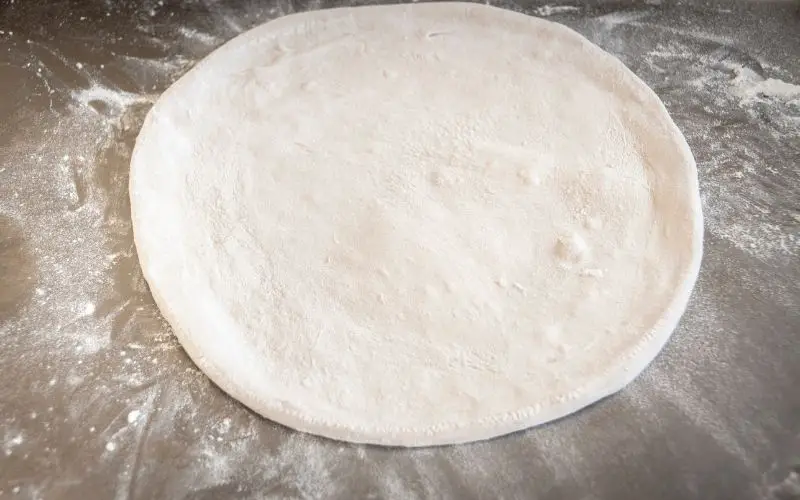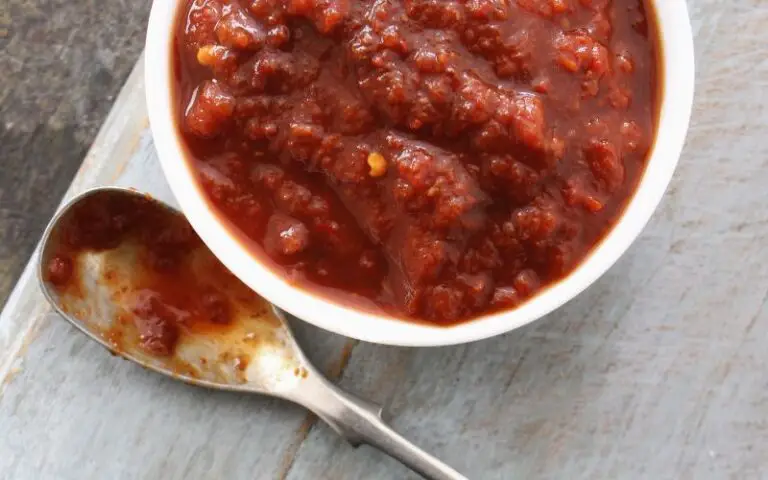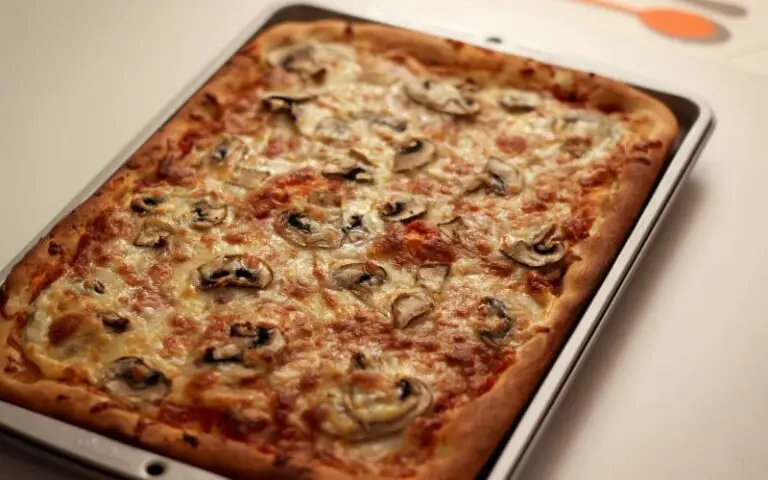Docking Pizza Dough: All You Need To Know
Last updated on September 11th, 2023 at 02:13 pm
There are different explanations regarding dough docking and its function in controlling dough bubbles.
When correctly done, docking helps to reduce the bubbles formed in the dough, but when done wrongly, it ruins the dough.
If you’re a pizza lover but still find it difficult to get the dough right, worry no more. This masterpiece is your saving grace.
Docking Pizza Dough isn’t difficult at all. With a little practice, you’ll become a pro.
Docking means poking holes in the dough to prevent it from puffing up during baking. Docking pizza dough helps to ensure that as steam builds up during baking, it can easily escape rather than cause the dough to rise. You can do this with a dough docker or other similar kitchen aids.
So, if you’ve been wondering what docking pizza dough entails and what it entails, you’ve come to the right place! Read on to find your answers.
What Does it Mean to Dock Pizza Dough?

While it is a simple go-to option on the menu list for all those who love to eat it, pizza is seemingly a complicated dish for those who have to prepare it themselves.
There are so many steps you have to take to get the best outcome. But, so you know, a pizza is only as good as the dough used to prepare it.
The dough in itself has a lot of aspects to its preparation, one of which is docking.
Interestingly, so many people are not so great at docking pizza dough.
Some people use pastry equipment to dock the pizza dough before baking. It involves poking the dough with a pencil to create holes.
Every baker should at least have a dough docker. If you don’t have one, you could use a rolling docker.
It is very simple and still serves the same purpose. You can also use the prongs of a large fork to dock pizza dough.
Again, there are various options, so you have no reason to leave your pizza to puff up during baking.
The holes created with the docker or fork fill up during the baking process, so you don’t have to worry about filling onto the pizza dough leaking through the crust to the bottom of the pan.
Ensure the holes aren’t too big to prevent the dough from tearing apart.
But they should be big enough to allow the steam to escape from the pizza dough.
The dough docking process requires simultaneously pinching the pizza dough’s top and bottom.
As simple as this sounds, keep in mind that docking can be overdone. If that happens, the outcome of the pizza won’t be as expected.
So, to get the best results, use the dough docker. It makes the pinching technique very easy.
The blunt tips on the dough docker’s wheels will pinch the pizza dough’s top and bottom together, controlling scorching or bubbling.
However, some dough dockers are different from others. For example, some have pointed tips on their docking wheels, while others don’t.
You can get one at a local store near you or at any online store. If you’re getting it online, do enough research to find the one that best suits your needs.
Always read the user manual to understand how to use it for the best results possible.
How do you, Dock Pizza Dough?
The most important step to docking pizza dough is getting a dough docker. After that, every other step is easy peasy if you can use the equipment.
Here are the steps to follow;
#1. Roll out Your Pizza Dough
After you knead the dough, you’ll need to cut it into triangular shapes before proceeding to dock.
Then, roll out the dough to your desired size. It is best to keep it at the ‘ready to bake’ size.
Ensure the dough is placed on a flat surface to prevent fallout or breakage.
#2. Prick Holes on the Pizza Dough
After rolling out the pizza dough, poke holes in it to give room for steam escape while it’s baking.
You can prick the holes using a fork or dough docker. But ensure the holes are not too big, so it doesn’t tear apart.
The holes eliminate pockets and bubbles in the crust, making the dough smooth and balanced for filling.
#3. Press the Dough into the Pan
When ready, shape the edge of the dough by pricking it (including the sides) with a fork.
Add your fillings and push them into the oven. Allow to bake and serve hot when ready.
How Do I Identify a Good Dough Docker?
A dough docker is a secret to a perfectly docked pizza dough at home. A docker with blunt points or tips is always the best.
Dough dockers with blunt tips will pinch your dough’s top and bottom. This tight bonding controls bubbles on the pizza.
There are different dough dockers on the market; each has its unique function and structure in docking pizza dough.
In all, never buy dough dockers with pointed tips. These types of dough dockers cause two major problems.
First, the tips pierce directly into the dough, resulting in tiny holes. Second, there’s only a very small area for properly bonding the dough.
Additionally, to confirm how good your dough docking is, hold it up in a well-lit area and look at the holes in the dough.
You’ll notice that some holes don’t pierce the other side. Rather, it creates a thin crust layer that seals the holes’ bottom.
This crust is an indication of where the blunt pins on your docker have pushed the dough, too, creating the dough bonding needed to control it from puffing up.
An overdone docked pizza dough often results from excessive docking.
This increase in the docking process results in a thinner layer of crispy-cracker crust and a unique appearance.
Is Docking Pizza Dough Necessary?
Many people, especially those just beginning to learn how to make pizza at home, are worried about why docking pizza dough is an important step in the first instance.
There are numerous reasons why docking pizza dough is a very vital step. The major reason is consistency and shape.
Docking pizza dough prevents it from steaming up and losing its shape during baking.
It allows you to ensure that the dough maintains the most appropriate shape.
Another benefit is that it prevents the dough from puffing up and bubbling in some spots because of high heat.
Ultimately, the docking technique depends on the desired result and mostly for baked products. However, even some pet snacks face docking before baking.
Always make incisions on your rolls and pies before baking so the dough rises satisfactorily.
Many other advantages come with docking pizza dough, which is why it is very necessary.
However, it would be best if you never attempt to skip the dough docking step.
Below is a table showing the advantages and disadvantages of docking pizza dough:
| Advantages | Disadvantages |
|---|---|
| It helps maintain shape and consistency. | Excessive poking of holes can cause the dough to tear up. |
| Eliminates bubbles | |
| Allows steam to escape |
Does a Docked Dough Improve Pizza Taste?
The major reason for dough docking is to prevent it from bubbling up from steam while in the oven.
It is only done in puff pastry applications (such as pizza and pie), so you won’t want to puff up but maintain its light layers.
Even if the weight of the dough isn’t even, docking sorts that out and gives no room for bubbling, with docking, you can easily get rid of the air bubble pockets.
Depending on the dough’s temperature and the preparation time, you can use a fork, docker, and even your fingertips to dock.
If you’re using your fingertips, ensure they’re clean. Then, you’ll only need to run your fingers on the dough as though you’re clawing it.
Docking is similar to edge stretching. The only difference is that you’re poking holes in the dough to release gas and air.
So, docking has nothing to do with improving the taste of your pizza dough.
Instead, season your crust with enough ingredients if you want to make your pizza taste better.
Baste it with a mixture of garlic powder, parsley, salt, parmesan cheese, butter, and a flavor of your choice.
Adding a small number of herbs like parsley to your pizza crust makes it even more delicious. Just give it a try!
Bottom Line
Now that you know what making pizza dough entails and how to do it yourself, you’re fully equipped to make a delicious pizza at home, whether as a business or satisfy your cravings.
It seems dough docking is the most complicated part of making pizza, but you’ve got that covered now, right? So, grab your cooking apron and get ready to dock some dough!







